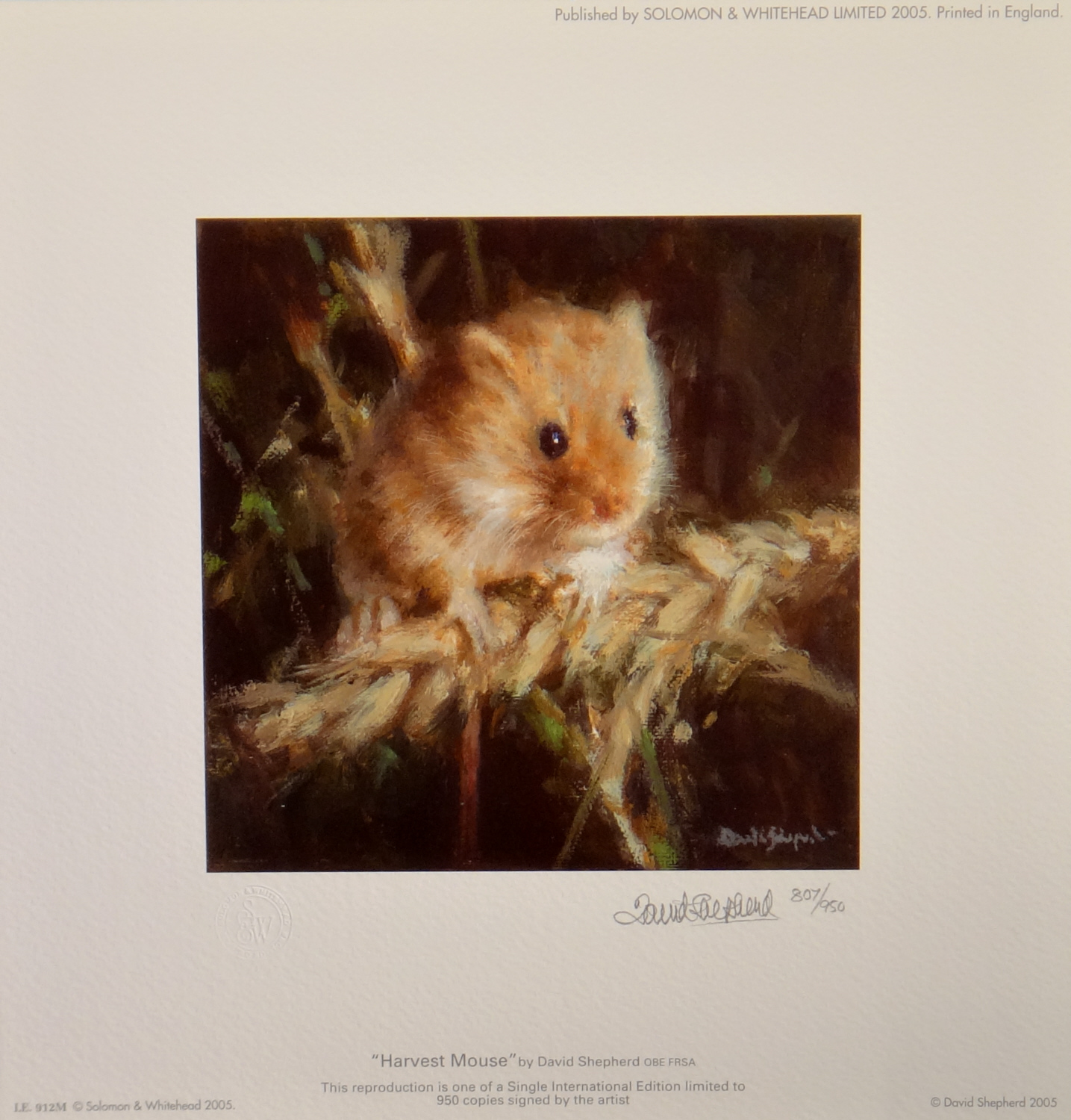Common Characteristics Of Antique Art
David Tatham

"Harvest Mouse"
Signed Limited Edition print
Published April 2005
Image Size:- 6" x 6"
Art is a highly subjective opinion and the question of identifying antique art is ambiguous in essence.
Some people believe that only those artifacts from the Roman and Greek empires are antique. Others consider artifacts
that are more than 100 years to be antique. Whichever way one chooses to look at this, there are basic features that will
always be prevalent in an antique artifact.
The back stamp must be there. It is basically the symbol of the manufacturer stamped or written on the back side of an item
detailing important information about it. This will establish the origin of the artifact, the age and for the classical
approach will determine whether it is from Greek or Roman Empires. The stamp is paramount in ascertaining the authenticity
and assessing its market value. The maker of the item will also be known. Art lovers are opinionated and could have some bias
towards particular artists or manufacturers.
check in order to notice them. Flaws prove that an item was handmade and is likely to be unique and rare.
Signs of wear and tear are also common. Most highly valued antiques are of age and are characterized by abrasion, oxidation,
and shrinkage. In furniture, the presence of crystallized glue and tool marks could also aid in determining the age.
The materials used to make the item also matter. For instance in furniture, the presence of the square-headed handmade nails
rather than the popular round-headed nails could indicate the time of manufacture.
The genre must be conspicuous. An individual should be able to determine the age of an artifact easily from its features.
The features that determine genre include the materials used, the period, and the artistic style used. Genres that are used
to classify paintings include Arts and Crafts, Modernist, Art Deco and Art Noumea whereas furniture genres based on historic
periods include; Queen Anne, Victorian, Federal American, and Georgian. It is important for one to research the various historic
periods before identifying an artifact. The style will be an age indicator.
for example, is original and not a counterfeit of the real thing.
Authenticity is established from the manufacturer's stamp on the back side or underside of the item. Determining the authenticity
requires an educated approach. It often requires the skills of a professional on this area to ascertain it. It involves a systematic
investigation and analysis to determine whether an item is genuine.
Objects must be referenced in national museum records. National museums have records of highly valued antique items. An individual
must therefore refer to records in museums closest to the place of origin of the item before deciding on the integrity of an artifact.
The features outlined above encapsulate the general features of antique art. They form an essential basis for identifying artifacts.
While some collectors may want to personally establish the integrity of an item they have collected, it often requires the eyes
of an expert.